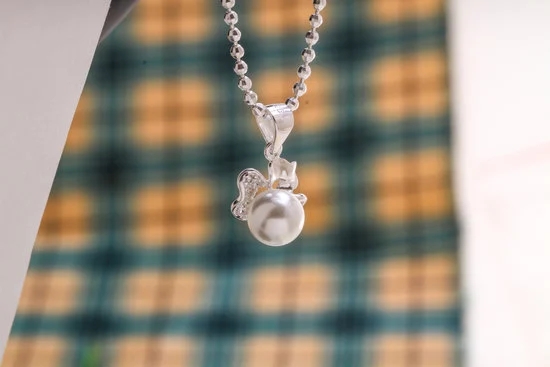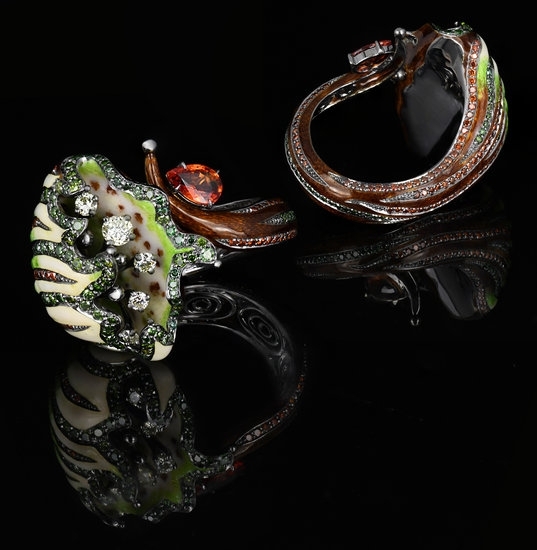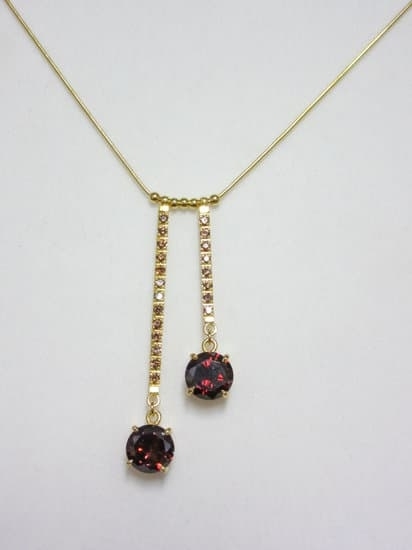The history of Portuguese jewelry holds a rich and intricate tapestry woven with centuries of tradition, culture, and craftsmanship. Throughout the ages, Portuguese jewelry has played a significant role in the country’s cultural and heritage identity. From its influence on design and technique to its symbolic meaning and royal patronage, Portuguese jewelry remains an enduring symbol of artistry and creativity.
Portugal’s historical events, traditions, and customs have greatly influenced the design and craftsmanship of its jewelry. These influences can be seen in the use of traditional techniques and materials such as filigree, gold, and azulejos – each reflecting Portugal’s unique cultural heritage. The symbolic meaning behind motifs found in Portuguese jewelry also speaks to the religious and cultural significance rooted deep within the country’s history.
As we delve into the world of Portuguese jewelry, it is important to explore how royal and aristocratic patronage have shaped its development and popularity over the years. From ancient times to modern eras such as the Baroque and Art Nouveau periods, there has been a distinct evolution in Portuguese jewelry styles that reflect changing tastes and societal influences. Additionally, contemporary trends in Portuguese jewelry-making continue to showcase innovation while honoring its timeless traditions.
The Influence of Cultural Heritage
The influence of Portuguese cultural heritage on the design and craftsmanship of jewelry is profound, reflecting the country’s rich history, traditions, and customs. Throughout the centuries, Portugal has been shaped by a variety of historical events, from the Moorish occupation to the Age of Discovery, all of which have left indelible marks on the artistry of Portuguese jewelry.
The intricate designs seen in Portuguese jewelry often draw inspiration from historical landmarks such as castles, palaces, and churches. Additionally, traditional motifs like maritime symbols (anchors, ships), religious emblems (crosses, saints), and nature-inspired elements (flowers, animals) are prevalent in Portuguese jewelry design. These cultural influences infuse Portuguese jewelry with a deep sense of identity and tradition that sets it apart in the global market.
Furthermore, Portugal’s craftsmanship in jewelry-making is rooted in age-old techniques that have been passed down through generations. Filigree work, a delicate form of metalwork using fine threads and grains to create intricate patterns and designs, is a hallmark of Portuguese jewelry.
The skilled artisans also employ precious materials such as gold and silver to create stunning pieces that exude timeless elegance. In addition to precious metals, azulejos – intricately designed ceramic tiles – are another traditional material used in Portuguese jewelry making.
Traditional Techniques and Materials
Portuguese jewelry has a long and rich history that dates back centuries, with traditional techniques and materials playing a crucial role in shaping the art form. The craftsmanship of Portuguese jewelry is heavily influenced by the country’s cultural heritage, reflecting both its historical events and customs. The intricate designs and craftsmanship of Portuguese jewelry are a testament to the skill and expertise of its artisans, making it an integral part of the nation’s heritage.
Filigree and Goldsmithing
One of the most notable traditional techniques used in Portuguese jewelry is filigree, a delicate and intricate style of metalwork. This technique involves twisting and soldering fine threads of gold or silver to create decorative motifs such as flowers, leaves, and scrolls.
Filigree has been a prominent feature in Portuguese jewelry since the 17th century, with artisans mastering the art form over generations. Additionally, goldsmithing has been a revered craft in Portugal for centuries, with skilled artisans using their expertise to create exquisite pieces that showcase the country’s rich cultural heritage.
Azulejos
Another significant influence on Portuguese jewelry is the use of azulejos, decorative ceramic tiles that adorn many buildings throughout Portugal. These colorful tiles often feature intricate geometric patterns and floral motifs, inspiring jewelry designers to incorporate similar designs into their creations. The vibrant colors and ornate patterns found in azulejos are translated into stunning pieces of jewelry, capturing the essence of Portugal’s architectural beauty.
Symbolism in Design
The traditional techniques and materials used in Portuguese jewelry are often imbued with deep symbolism. For example, religious motifs are prevalent in many pieces, reflecting Portugal’s strong Catholic heritage. Symbols such as the cross or images of saints hold significant meaning for both artisans and wearers alike.
Overall, traditional techniques such as filigree work, goldsmithing, and the incorporation of azulejos have shaped Portuguese jewelry into a distinctive art form that celebrates the country’s cultural heritage. These techniques continue to be valued by contemporary artisans who strive to honor the legacy of Portuguese jewelry while also incorporating modern innovations into their designs.
Symbolism in Portuguese Jewelry
Portuguese jewelry has a rich and fascinating history, deeply rooted in the country’s cultural heritage. The symbolic meaning behind the various motifs and designs found in Portuguese jewelry reflects the religious and cultural significance that has been passed down through generations. These symbols often serve as an embodiment of Portugal’s historical events, traditions, and customs, making them an integral part of the nation’s identity.
One of the most prominent symbols found in Portuguese jewelry is the use of religious motifs, reflecting Portugal’s strong Catholic tradition. Crosses, images of saints, and other religious symbols are commonly incorporated into jewelry designs, representing faith and spirituality. Additionally, maritime motifs such as ships and anchors are also prevalent in Portuguese jewelry, symbolizing the country’s rich seafaring history and exploration during the Age of Discovery.
Furthermore, traditional Portuguese jewelry often features intricate filigree work, a centuries-old technique that involves twisting and soldering fine metal threads to create delicate designs. This artistry is not only aesthetically beautiful but also holds deeper symbolism within Portuguese culture. The use of specific materials like gold and azulejos (traditional blue-tinged ceramic tiles) further adds layers of cultural significance to these jewelry pieces.
Overall, the symbolism found in Portuguese jewelry not only reflects the country’s historical and religious heritage but also serves as a testament to the craftsmanship and artistic expression that have evolved over centuries. Today, these symbolic elements continue to enchant wearers with their timeless allure and carry on the legacy of Portuguese jewelry in the global market.
Royal and Aristocratic Influence
The influence of royal and aristocratic patronage on the development and popularity of Portuguese jewelry is a significant aspect of its history. Throughout the centuries, Portugal has been home to several ruling dynasties and noble families, whose support of the jewelry-making industry has left an indelible mark on the art form. From commissioning extravagant pieces for royal ceremonies to setting fashion trends for the elite, the patronage of royalty and nobility has greatly shaped the evolution of Portuguese jewelry.
One notable example of royal influence is the use of specific motifs and symbols in Portuguese jewelry that were favored by the monarchy. These motifs often carried deep symbolic meanings, representing power, lineage, or religious devotion. Additionally, members of the aristocracy sought out custom-made pieces that reflected their status and heraldic emblems, further driving innovation in design and craftsmanship.
The aristocratic influence on Portuguese jewelry also extended to the promotion of certain techniques and materials. Noble families often encouraged skilled artisans to explore intricate methods like filigree work, which became synonymous with Portuguese jewelry. Moreover, the preference for using precious metals such as gold and silver in elaborate pieces was perpetuated by aristocratic taste and wealth. As a result, these traditional techniques and materials continue to be integral to Portuguese jewelry-making today.
| Aspect | Description |
|---|---|
| Royal Influence | The influence of royalty on specific motifs and symbols in Portuguese jewelry |
| Aristocratic Patronage | The promotion of intricate techniques like filigree work by noble families |
| Preference for Precious Metals | The aristocratic preference for using gold and silver in elaborate pieces |
Evolution of Portuguese Jewelry Through the Centuries
Portuguese jewelry has a rich history that spans centuries, undergoing various stylistic and technical changes influenced by historical events and cultural shifts. The evolution of Portuguese jewelry through the centuries offers a fascinating glimpse into the country’s artistry and craftsmanship.
Throughout ancient times, Portugal’s jewelry-making techniques were greatly influenced by the intricate filigree work, a delicate and elaborate form of metalwork. This technique, which involves carefully twisting and soldering fine threads of gold or silver to create decorative motifs, remains a hallmark of Portuguese jewelry craftsmanship to this day. During the Baroque period, Portuguese jewelry embraced grandeur and opulence, with bold designs featuring ornate details and gemstone embellishments.
In the Art Nouveau period, there was a notable shift towards nature-inspired motifs and asymmetrical designs in Portuguese jewelry. This artistic movement brought a fresh creativity to the country’s jewelry-making tradition, featuring graceful lines and organic forms. In more recent times, contemporary Portuguese jewelry has continued to evolve with changing trends while still maintaining a strong connection to its traditional roots.
The evolution of Portuguese jewelry through the centuries reflects not only changes in aesthetic preferences but also the influence of global trade and cultural exchange. From ancient filigree work to modern-day innovations, Portuguese jewelry continues to captivate with its unique blend of tradition and innovation.
Famous Portuguese Jewelry Designers and Houses
Portugal has a rich history of jewelry making, and throughout the centuries, several designers and houses have emerged as prominent figures in the industry. These individuals and companies have made significant contributions to the development and popularity of Portuguese jewelry, both within the country and on the global stage.
One of the most famous Portuguese jewelry designers is Filipe Fonseca. His unique approach to jewelry design blends traditional techniques with contemporary aesthetics, resulting in stunning pieces that reflect Portugal’s cultural heritage while also appealing to modern tastes. Fonseca’s work has garnered international acclaim and has been featured in prestigious exhibitions and publications around the world.
In addition to individual designers, there are several renowned jewelry houses in Portugal that have a long-standing tradition of craftsmanship and innovation. Tavares is one such house, known for its exquisite filigree work and dedication to preserving traditional Portuguese jewelry-making techniques. The house has a prestigious reputation for producing high-quality pieces that showcase the artistry and skill of Portuguese craftsmen.
Another notable figure in the history of Portuguese jewelry is the renowned artist René Lalique who made a significant impact on Portuguese jewelry-making during his time working in Portugal. His influence on local artisans helped shape the evolution of Portuguese jewelry, incorporating elements of Art Nouveau into traditional designs.
These designers and houses, along with many others, have played a pivotal role in shaping the landscape of Portuguese jewelry-making. Their innovation, creativity, and commitment to preserving cultural heritage have contributed to the enduring legacy of Portuguese jewelry in the global market.
Contemporary Portuguese Jewelry Scene
The contemporary Portuguese jewelry scene has seen a resurgence in recent years, blending traditional techniques with modern innovation. This fusion has allowed Portuguese jewelry to maintain its rich cultural heritage while appealing to a global audience. With a focus on quality craftsmanship and unique designs, the contemporary Portuguese jewelry scene continues to make a mark in the industry.
Modern Trends and Innovations
In recent years, Portuguese jewelry designers have been incorporating new materials and techniques into their work, pushing the boundaries of traditional craftsmanship. From experimental use of gemstones to innovative metalwork, these designers are creating pieces that appeal to a younger, trend-conscious market while still honoring the history of Portuguese jewelry.
Impact of Globalization
As the world becomes more interconnected, the impact of globalization on the Portuguese jewelry scene cannot be overlooked. Designers are drawing inspiration from diverse cultures and influences, resulting in pieces that reflect a global perspective while still maintaining their Portuguese identity. Additionally, increased access to international markets has allowed Portuguese jewelry to gain recognition on a global scale.
Preservation of Heritage
Despite embracing modern trends and influences, contemporary Portuguese jewelry designers remain committed to preserving their heritage. Many continue to use traditional techniques such as filigree and azulejos-inspired designs, ensuring that these age-old practices are kept alive for future generations. By striking a balance between tradition and innovation, the contemporary Portuguese jewelry scene continues to thrive and leave an indelible mark on the global stage.
With an eye toward both tradition and innovation, the contemporary Portuguese jewelry scene is poised for continued success in the global market. As designers draw inspiration from their rich cultural heritage while embracing modern trends, they are contributing to the ongoing legacy of Portuguese jewelry on a worldwide scale.
Conclusion
In conclusion, the history of Portuguese jewelry is a rich tapestry woven with the threads of cultural heritage, traditional techniques, and symbolic meanings. From the influence of historical events and aristocratic patronage to the evolution of styles through the centuries, Portuguese jewelry has been an integral part of the country’s culture and heritage. The use of traditional techniques such as filigree, gold, and azulejos has been a testament to the craftsmanship and artistry of Portuguese jewelers throughout history.
The symbolism found in Portuguese jewelry, with its religious and cultural significance, has contributed to its enduring appeal and popularity. From royal adornments to everyday wear, Portuguese jewelry has held a special place in the hearts of people both within Portugal and around the world.
As we look to the contemporary Portuguese jewelry scene, it is evident that modern trends and innovations continue to shape the industry, while still honoring traditional craftsmanship and design. With prominent designers and houses making significant contributions to the global jewelry market, Portuguese jewelry continues to thrive in today’s interconnected world. The legacy of Portuguese jewelry lives on as a testament to its enduring beauty and cultural significance.
Frequently Asked Questions
What Jewelry Is Portugal Known For?
Portugal is known for its beautiful filigree jewelry, which is intricately designed and crafted using delicate gold or silver threads. These pieces often feature traditional Portuguese motifs and are highly prized for their craftsmanship and unique aesthetic.
What Is the History of the Filigree in Portugal?
The history of filigree in Portugal dates back to the 12th century when it was introduced by the Moors. Over time, Portuguese artisans perfected the art form, creating intricate designs that were highly sought after throughout Europe. Today, filigree continues to be a celebrated aspect of Portugal’s jewelry-making tradition.
What Makes Portuguese Gold Different?
Portuguese gold is considered unique due to its high quality and purity. The country has strict regulations and standards for gold production, ensuring that items labeled as “Portuguese gold” are indeed authentic and of superior quality. This commitment to excellence has made Portuguese gold highly regarded in the jewelry industry worldwide.

Welcome to my jewelry blog! My name is Sarah and I am the owner of this blog.
I love making jewelry and sharing my creations with others.
So whether you’re someone who loves wearing jewelry yourself or simply enjoys learning about it, be sure to check out my blog for insightful posts on everything related to this exciting topic!





